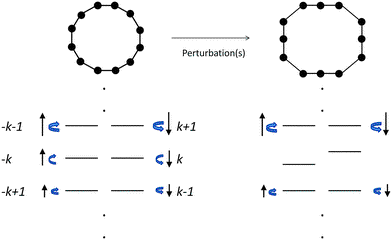Detection of a weak ring current in a nonaromatic porphyrin nanoring using magnetic circular dichroism

Abstract
We compare the absorption and magnetic circular dichroism (MCD) spectra of a series of porphyrin oligomers – dimer, tetramer, and hexamer – bound in a linear or cyclic fashion. The MCD signal is extremely weak for low energy transitions in the linear oligomers, but it is amplified when the cyclic porphyrin hexamer binds a template, restricting rotational freedom. The appearance of Faraday A terms in the MCD spectra demonstrates the presence of a magnetic moment, and thus, uncompensated electronic current. The value of the excited state magnetic moment estimated from the A term is very low compared with those of monomeric porphyrins, which confirms the nonaromatic character of the cyclic array and the lack of a global ring current in the ground state of the neutral nanoring. DFT calculations predict the absorption and MCD patterns reasonably well, but fail to reproduce the MCD sign inversion observed in substituted monomeric zinc porphyrins (“soft” chromophores). Interestingly, a correct sign pattern is predicted by INDO/S calculations. Analysis of the MCD spectra of the monomeric porphyrin unit allowed us to distinguish between two close-lying lowest energy transitions, which some previous assignments placed further apart. The present results prove the usefulness of MCD not only for deconvolution and assignment of electronic transitions, but also as a sensitive tool for detecting electronic ring currents.